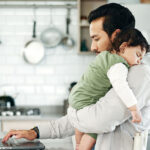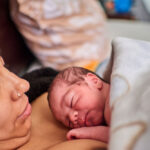Baby’s First-Year Milestones
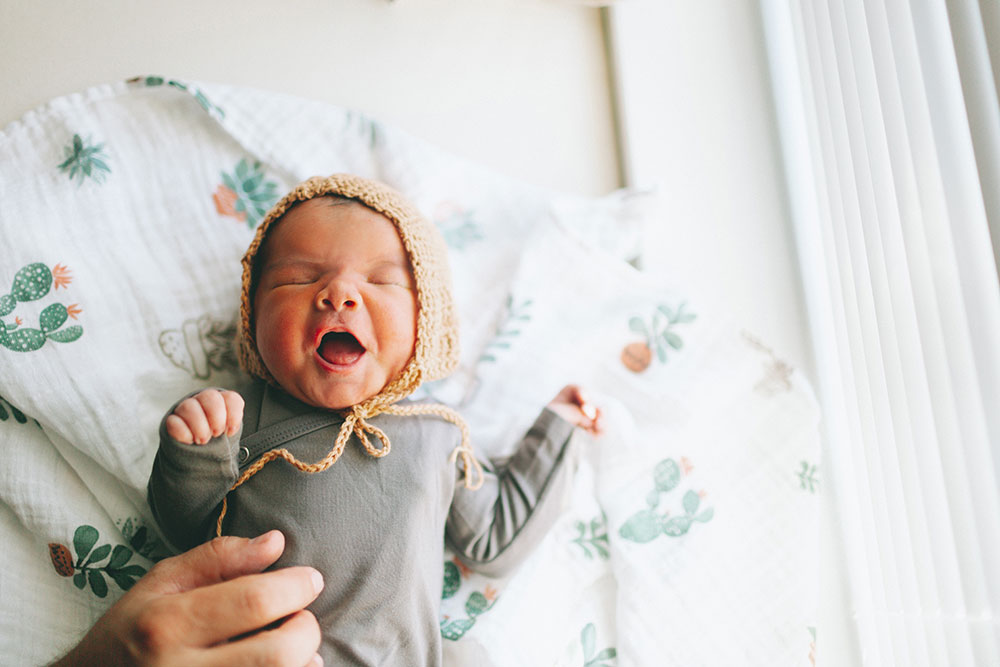
Physical, social, sleep, and feeding developments you can expect your newbie to reach by their first birthday.
Between birth and age 1, your little sprout will do some serious growing—and not just in size. A baby’s first year is a blur of cognitive and mobile changes that occur at warp speed compared to the rest of their life.
With every new tooth and adorable little trick also come questions: Shouldn’t my baby be able to walk by now? Why doesn’t baby want finger foods? Shouldn’t my baby be saying ‘Mama’ by now? It’s natural to question your baby’s progress but to avoid over-analyzing everything, it’s a good idea to familiarize yourself with the typical timetable for major first-year milestones. And don’t forget to break out the baby book while you’re at it because no matter where your wee one falls on the charts, you’re going to want to remember these moments.
Birth to 3 Months
Physical changes
Right now your newborn is learning what it’s like to live outside the womb. During the first three months, expect flailing limbs, close-fisted hands, and a few cross-eyed glances. Your baby can only see about 8 to 10 inches from its face, so get close when interacting. However, watch out for those gesticulating arms—if baby can’t keep from hitting itself, you’re fair game, too. And limbs aren’t alone in their lack of restraint; newborns have only slight head control.
During tummy time, your baby might be able to summon the strength to hold up their head for a second but don’t expect much more. By the end of this stage, baby will be able to briefly follow moving objects with its eyes, bring the hands to the mouth, and grasp things. (So, watch that ponytail and lose the hoop earrings!)
Social advancements
Whatever your baby might need, you’ll hear about it, loud and clear. At this stage, crying is an infant’s main form of communication. Over time, you will learn to distinguish between your tot’s cries to know whether they’re wet, not feeling well, or just missing your undivided attention.
Although your baby can’t talk, they’re still giving you plenty of clues. Lip-smacking is a sure sign your newborn is hungry, and yawning can be a signal of sleepiness or needing a break. According to Kevin Nugent, MD, author of Your Baby is Speaking to You, yawning is baby’s tiny body’s way of taking control and saying “timeout.” Around two months, your baby will make its first non-wailing peep. Cooing noises show interest, so keep talking to them and narrating when they’re around because your newbie knows (and loves to hear) your voice.
Sleep and feeding developments
You’re likely wondering what your baby’s sleeping patterns will be upfront, and how it will affect your ability to catch some shuteye, too. The good news is your little bundle will snooze for about 14 to 17 hours a day. The bad news: Baby will be on an erratic sleep pattern, mostly snoozing in two- and three-hour chunks during the day and maybe a four- or five-hour stretch at night.
Like sleeping, when it comes to your little one’s eating habits think small but frequent. Infants usually need to be fed mini-meals every two or three hours. The number of diaper changes can vary, but doctors agree soft stool is best.
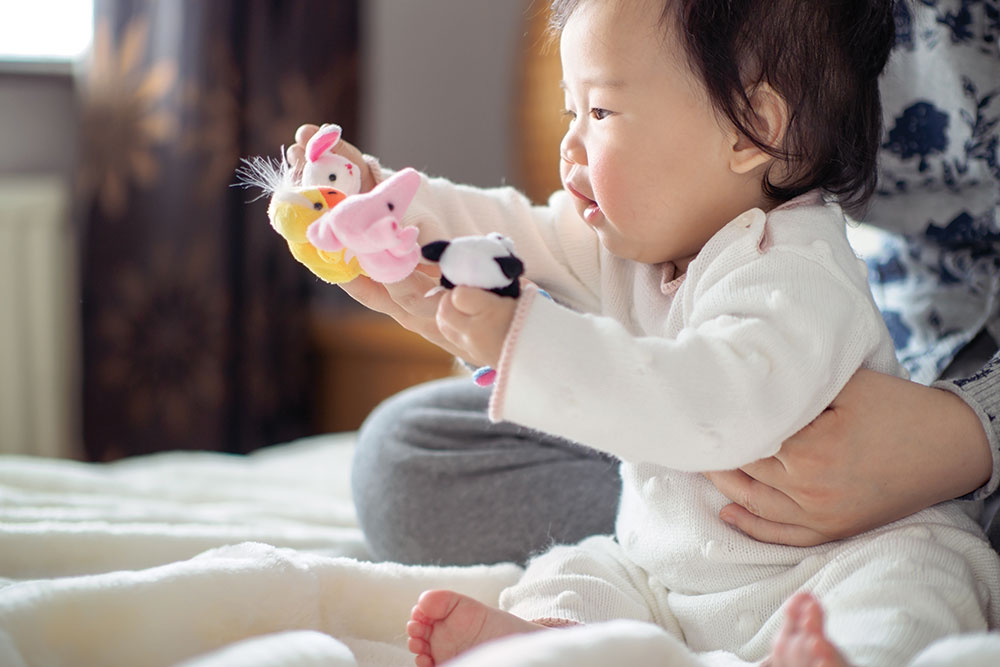
4 to 6 Months
Physical changes
A few months into your baby’s life, you have a pint-sized explorer on your hands. Your little one might not be on the move just yet, but they’re using their hands—and mouth—to learn more about the world around them. Those tiny, tight fists have opened up and can now grab small toys.
Your teetering tot will soon be able to shake that rattle—and roll! Most babes turn from front to back first because it requires less coordination. (Look for the back-to-front roll closer to 6 months.) Your baby should also be working their way up. They can push up and support their upper body and head while lying on their stomach, and with a bit of back support, they might be able to sit. Soon that support will be their hand on the ground until they can balance alone without leaning.
Social advancements
Now that your little one has better control of their wobbly noggin, they’ll be able to turn toward familiar voices and sounds. Most of baby’s conversation contributions will still be coos, but make a silly face or two and you might hear a hearty (and heartwarming) laugh.
Right now, baby’s learning how to get your attention by fussing; toward the end of this phase, however, you’ll hear nonsense consonant sounds, like “bababa,” as baby mimics your voice. Once they’ve gotten the hang of babbling, they’ll use that (and, yes, crying) to communicate with you, so listen for repeated sounds and intonations of joy or unhappiness.
Sleep and feeding developments
Around this phase, your babe will still sleep 12 to 16 hours with about three naps each day, but you’ll be able to catch a few more of those elusive Zs at night. (We’re talking up to six hours!) By month six, your baby should double their birth weight. Baby’s numbers on the scale will keep climbing as you introduce solid foods. The American Academy of Pediatrics (AAP) recommends gradually introducing solids at around 6 months of age, but your pediatrician might advise differently depending on your little one’s nutritional needs. Start with semi-solid foods, like mushy cereal or mashed avocado, and keep a keen eye out for any signs of food allergies.
If what’s going in changes, you can bet what’s coming out will look a little different, too. Baby’s bowel movements will get harder (but still fairly soft— dry stools can be a sign of dehydration or constipation) and stinkier.
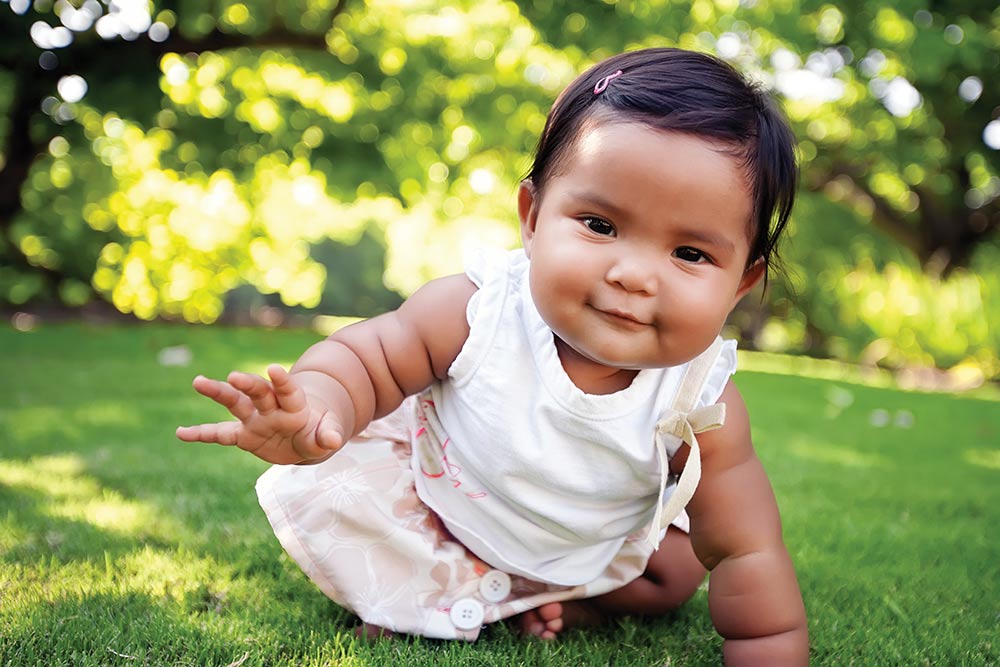
7-9 Months
Physical changes
Once your baby figures out they can reach a toy—or you—by rolling over, they’ll find other ways of getting around. If you haven’t made time to babyproof yet, you’d better hurry! Your wee wiggler will probably get their move on by scooting on their bottom or perfecting the “army crawl,” in which they’ll pretty much drag themselves across the floor with their arms. From there, your baby will maneuver from a sitting position and hold themselves up with their hands and knees. As soon as baby learns to push off, you’ll have a crawler on your hands. (But keep in mind, some babies skip crawling altogether and go straight for the gold: walking.)
Near the end of this stage, your little adventurer will start using furniture to pull themselves up. They’ll also begin to master the pincer grasp, which uses the thumb and forefinger—like a pinch—to hold small objects. Baby’s new ability to grip will help with exploring objects (and testing their durability) by banging things together and dropping them on the floor.
Social advancements
Soon you’ll start to recognize some of those incoherent babbles. You might get a “mama” or “dada” by the end of this stage, but your baby is just beginning to understand that these sounds have meanings behind them. By nine months, they should be able to respond to simple commands, like stopping when you say, “No,” or looking when you call them by name.
Your baby is also learning how to communicate with gestures, mostly by watching you ever so closely, so try waving bye—you will likely get a fluttering hand right back. This age is a particularly fun time to pull out your peekaboo face because baby is old enough to play along with you.
Sleep and feeding developments
That pincer grasp comes in handy as your tot learns to self-feed. Keep trying new, soft foods like cooked carrots, mashed potatoes, and teething biscuits. (That’s right, you’ll be seeing plenty of drool—and feeling a bit damp when teething kicks in around month six.)
Your baby will continue gaining weight but at a slower pace, averaging a pound a month, and their bowel and bladder will become more regulated. If you’re looking forward to returning to a fairly normal sleep schedule (and who isn’t?), get excited. Your baby’s sweet dreams will stretch to roughly 10 hours or more a night, but they’ll still need those daytime naps.
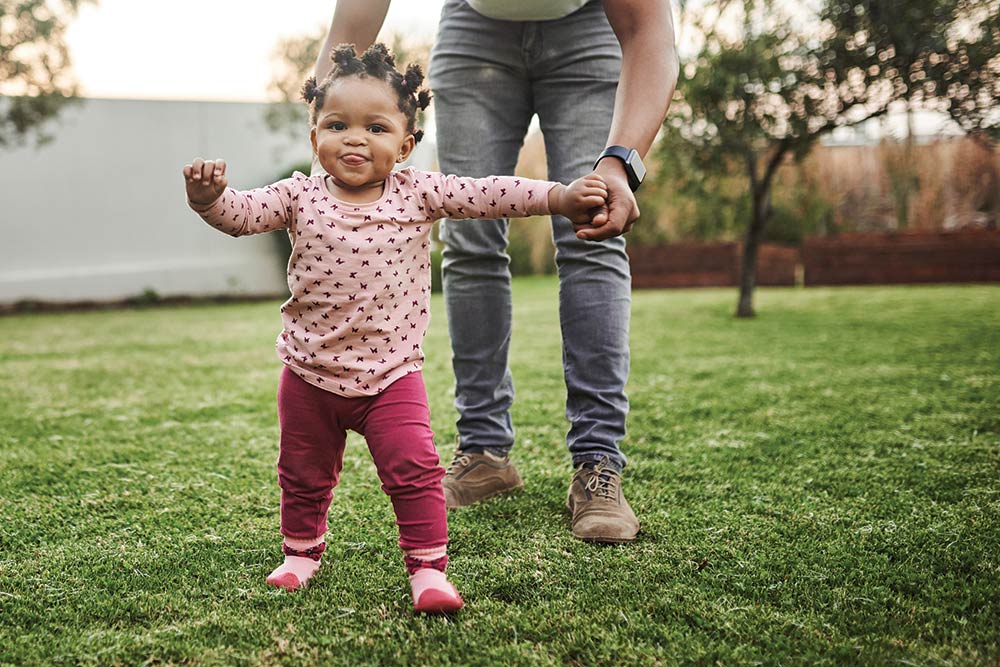
10 to 12 Months
Physical changes
In the final months of baby’s first year, they’ll prep for the jump into toddlerhood. During this phase, they’ll be sitting without any support and cruising (walking while holding onto furniture) around the room. Close to their first birthday, you might see those momentous first steps, but there’s a wide window for this milestone. Don’t worry if your child doesn’t walk for a couple more months.
Your wee one is still learning how things work by putting objects in containers and taking them back out, imitating scribbling, and practicing pretend play— think chatting away on an imaginary phone like a pro.
Social advancements
Your baby is becoming quite the talker, even if you can’t make out everything they are saying. By 12 months, your baby might have added a few more words to their repertoire, and they’ll be quick to repeat sounds that you (or even animals) make.
Around this time, they’ll rely on pointing as another way of communicating with you, whether they’re pointing at something new or something they want. Use those opportunities to teach your baby new words because their brain is starting to connect objects with labels.
Sleep and feeding developments
In just one year, your baby has done a whole lot of growing. They should triple their birth weight and add approximately 9.5 inches to their overall length (height). Talk with your pediatrician about any diet changes, but formula-fed babies are usually ready to switch to cow’s milk at 12 months. Breastfed babies can continue to nurse or make the swap to cow’s milk, too. If you trade the bottle—or breast—for a sippy cup, give your little one plenty of time to practice.
Now that baby has between one and four teeth (or more!) in their adorable grin, they can handle more solid foods. It’s also time to gently introduce baby to a toothbrush. At this age, tots still sleep for about 10 hours each night but need fewer naps to get through the day—less than four hours worth.
In 12 short months, that precious bundle you welcomed into the world has (or will soon!) become a walking, talking toddler. You’ve been right there with them for every milestone, so you know better than anyone that when that first birthday rolls around, you both have a lot to celebrate.


